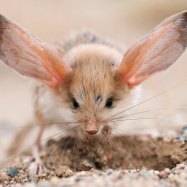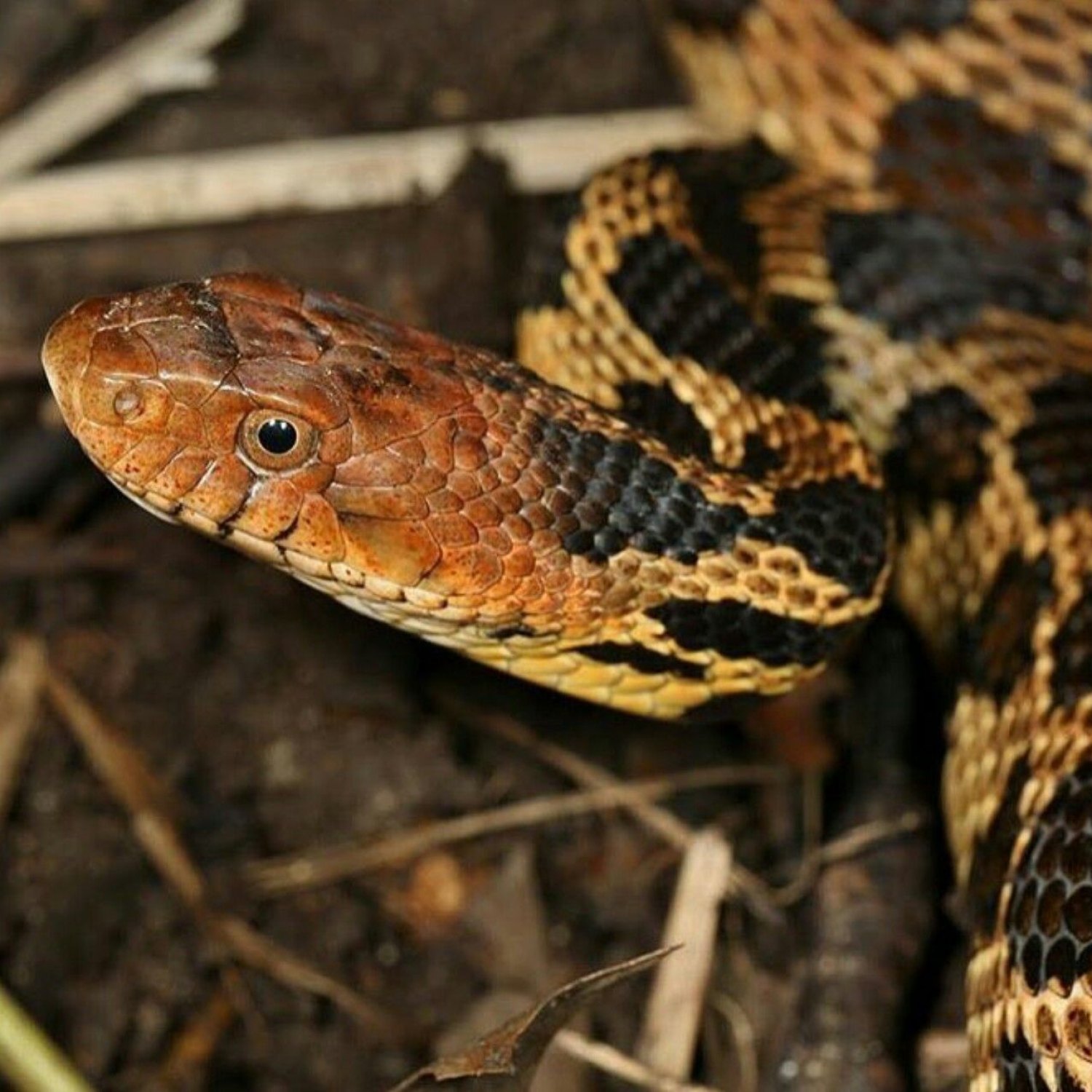
Fox Snakes
3 to 5 feet
Looking to spot a fox snake in the wild? These slender reptiles can reach lengths of 3 to 5 feet and are commonly found in the Midwestern and Eastern regions of the United States. With their distinct colored patterns and smooth scales, fox snakes are a fascinating sight for any nature enthusiast. Spot one on your next hike and learn more about this member of the Colubridae family with a slim and elongated body shape.
Animal Details Summary:
Common Name: Fox Snake
Kingdom: Animalia
Habitat: Grasslands, forests, farmlands
The Beautiful and Mysterious Fox Snake: A Fascinating Reptile of North America
The world is full of diverse and intriguing creatures, and the Fox Snake, or Elaphe vulpina, is certainly one of them. With its unique appearance and impressive characteristics, the Fox Snake is a popular subject of fascination among animal lovers and researchers alike. From its scientific classification to its preferred habitat, this article will delve into the world of the Fox Snake, exploring its fascinating features and unique traits.The Basics: What is a Fox Snake?
The Fox Snake, also known as the Eastern Fox Snake or the Western Fox Snake, is a non-venomous reptile that belongs to the family Colubridae, commonly referred to as colubrids Fox Snakes. Its scientific name, Elaphe vulpina, is derived from the Greek word "elaphos" meaning deer, and the Latin word "vulpina," meaning fox, alluding to its fox-like coloration and hunting style.The Habitat and Distribution of Fox Snakes
The Fox Snake can be found in various habitats, including grasslands, prairies, woodlands, and farmlands. They are most commonly found in the Midwestern and Eastern regions of the United States and parts of Canada. Within the United States, their range includes states such as Missouri, Illinois, Ohio, Michigan, and parts of Wisconsin and Indiana.Their preferred habitat is typically near water sources, as they are excellent swimmers and use this ability to hunt for their prey. They also prefer areas with ample vegetation, as it provides them with cover and shelter.
The Appearance and Body Features of Fox Snakes
One of the most striking features of the Fox Snake is its coloration. These reptiles can vary in color from yellow to light brown with dark brown blotches running along their backs, giving them a distinctive checkered or brindle appearance. This coloration serves as excellent camouflage in their natural habitat, helping them hide from predators Flying Squirrel.With a slim and elongated body shape, Fox Snakes can reach lengths of 3 to 5 feet, with the record being 6 feet. They have a relatively slender build, with an average weight of 2 to 4 pounds. Their heads are small and round, with a slightly pointed snout, and their eyes are large with round pupils, giving them excellent vision to aid in hunting.
The Feeding Habits of Fox Snakes
Fox Snakes are carnivorous creatures, which means they primarily eat other animals. They are opportunistic hunters, meaning they will eat whatever prey is available in their surroundings. Some of their preferred food items include frogs, toads, small mammals, birds, and their eggs.Interestingly, Fox Snakes have a unique hunting strategy where they mimic the behavior of foxes, hence their name. They stalk their prey and then lunge forward with a quick strike, catching their target with impressive accuracy. Their long and sharp teeth and powerful jaws help them hold onto their prey until they are ready to consume it whole.
The Social Behavior of Fox Snakes
Fox Snakes are mostly solitary creatures and only come together for breeding purposes. They are primarily nocturnal, meaning they are most active during the night. During the winter months, Fox Snakes hibernate in groups, sharing communal dens with other snakes to help conserve body heat.Within their own species, Fox Snakes have a well-defined hierarchy, with the larger and older snakes being dominant over the smaller ones. They communicate through a series of hisses and vibrations, and their unique coloration also plays a role in territorial displays and mating rituals.
The Life Cycle of Fox Snakes
The breeding season for Fox Snakes usually happens in the spring, with females laying their eggs a few weeks after mating. The female Fox Snakes can lay up to 10-20 eggs at a time, and they carefully select a warm, secure location to lay them.Once hatched, the baby Fox Snakes are fully independent and go on to live solitary lives. They have a life expectancy of around 10-12 years in the wild, but they can live up to 20 years in captivity.
The Role of Fox Snakes in the Ecosystem
As with all animals, Fox Snakes play a vital role in their ecosystem. They help control rodent populations, keeping them in check and preventing infestations. The prey they consume also serves as a food source for other animals, maintaining balance within the food chain.Unfortunately, Fox Snakes are also preyed upon by larger animals, such as birds of prey, raccoons, and larger snakes like the Eastern Hognose Snake. Their numbers are also declining due to habitat destruction, road mortality, and illegal capture for the pet trade.
The Importance of Conservation Efforts for Fox Snakes
The decline in Fox Snake populations highlights the importance of conservation efforts for these incredible creatures. Several states have included them on their endangered or threatened species lists, and various conservation groups are working to protect their habitats and educate the public about the critical role they play in their ecosystems.If you live in an area where Fox Snakes are found, you can help by being mindful of their presence and taking steps to protect their habitats. For example, if you have a garden or farmland, avoid using pesticides, as they can harm not just the targeted pests, but also beneficial animals like Fox Snakes.
In Conclusion
The Fox Snake is a remarkable reptile that may not get as much attention as its venomous counterparts. Nonetheless, it is a fascinating creature with unique characteristics and a vital role in its ecosystem. By learning more about these incredible animals, we can appreciate and admire them, all while playing a vital role in their conservation efforts.

Fox Snakes
Animal Details Fox Snakes - Scientific Name: Elaphe vulpina
- Category: Animals F
- Scientific Name: Elaphe vulpina
- Common Name: Fox Snake
- Kingdom: Animalia
- Phylum: Chordata
- Class: Reptilia
- Order: Squamata
- Family: Colubridae
- Habitat: Grasslands, forests, farmlands
- Feeding Method: Carnivorous
- Geographical Distribution: North America
- Country of Origin: United States, Canada
- Location: Midwestern and Eastern regions of the United States
- Animal Coloration: Yellow to light brown with dark brown blotches
- Body Shape: Slim and elongated
- Length: 3 to 5 feet
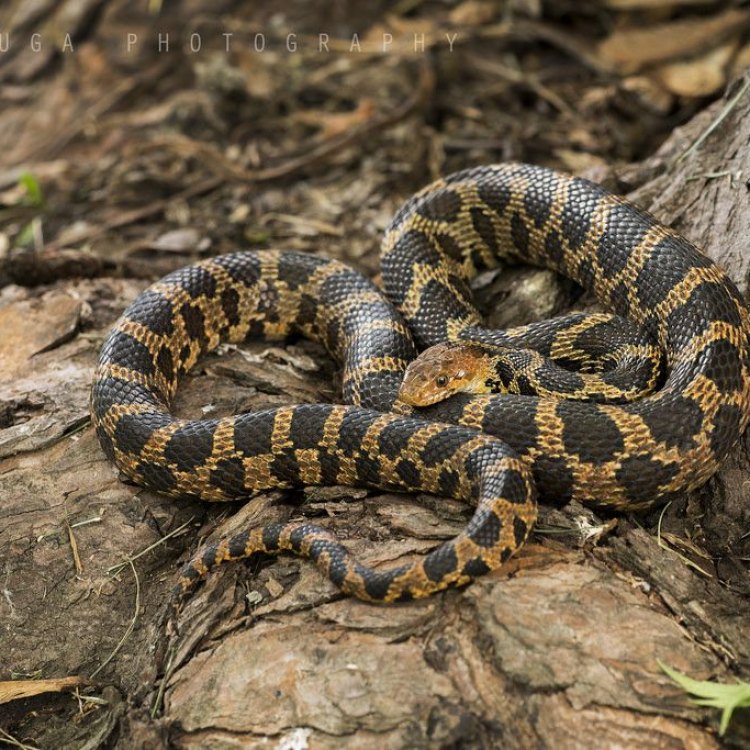
Fox Snake
- Adult Size: 4 to 5 feet
- Average Lifespan: 10 to 20 years
- Reproduction: Sexual
- Reproductive Behavior: Mating occurs in spring, eggs are laid in summer
- Sound or Call: None
- Migration Pattern: No regular migration
- Social Groups: Solitary
- Behavior: Nocturnal, secretive
- Threats: Habitat loss, road mortality, predation
- Conservation Status: Least Concern
- Impact on Ecosystem: Maintains balanced prey populations
- Human Use: Not commonly used by humans
- Distinctive Features: Distinct light-colored chin and throat
- Interesting Facts: Fox snakes are known to vibrate their tails when threatened, mimicking the rattlesnake noise.
- Predator: Birds of prey, mammals, other snakes
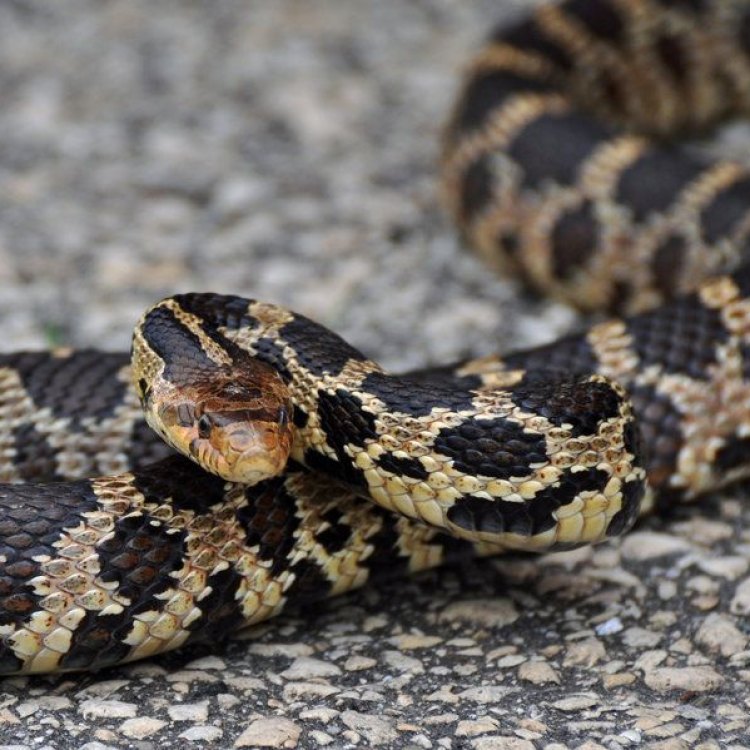
Elaphe vulpina
The Fascinating Fox Snake: A Unique Species in the Snake World
Snakes are often portrayed as menacing and dangerous creatures, but not all of them fit this stereotype. The fox snake, for instance, is a fascinating and non-threatening species that is often overlooked. With its distinctive features and interesting behaviors, this snake deserves more attention and appreciation. In this article, we will delve deeper into the world of fox snakes and discover what makes them truly unique PeaceOfAnimals.Com.Adult fox snakes typically grow to be 4 to 5 feet in length, making them a relatively large species compared to other snakes. However, their size is not the only thing that sets them apart. Fox snakes have an average lifespan of 10 to 20 years, which means they can live for quite a long time in the wild.
One of the most interesting aspects of fox snakes is their reproductive behavior. Like many other snake species, they reproduce sexually. However, the mating process is pretty intriguing. Mating usually occurs in spring when the weather is warmer, and the snakes are more active. Male fox snakes will often engage in intense wrestling matches to impress the females and win the opportunity to mate. Once the female is ready, she will lay eggs in the summer, usually in a secluded area such as under logs or in rock crevices Fer De Lance Snake.
But one thing that sets fox snakes apart from other species is that they do not produce any sounds or calls. So if you're expecting to hear a hissing or rattling noise, you'll be left disappointed. Fox snakes rely on their camouflage and defensive behaviors rather than vocalizations to protect themselves from predators.
Speaking of predators, fox snakes do have their fair share of threats in the wild. Habitat loss is one of the biggest concerns for this species. As human populations grow, natural habitats are being destroyed, leaving these snakes with fewer places to live and hunt for food. Road mortality is another significant threat. Fox snakes are often hit by cars when they try to cross roads, resulting in a high mortality rate.
Predation is also a common threat for these snakes. Being a part of the food chain, fox snakes are preyed upon by a variety of animals, including birds of prey, mammals, and other snakes. However, they do have a remarkable defense mechanism that helps them survive.
Fox snakes have a distinctive light-colored chin and throat that can easily be mistaken for a rattlesnake's markings. When threatened, they will vibrate their tails, producing a sound that mimics the infamous rattling noise. This behavior often scares off potential predators, giving the snake a chance to escape.
While fox snakes are not listed as an endangered species, they are considered a species of least concern. However, their role in the ecosystem is vital. These snakes play a significant role in maintaining balanced prey populations. As predators themselves, their presence helps control the population of small animals such as rodents, thus preventing ecological imbalances.
In terms of human use, fox snakes are not commonly used or exploited by humans. They are not venomous, and their meat is not considered a delicacy. However, these snakes do have a negative reputation in some areas, leading to their killing or unnecessary removal from their natural habitat. This is why educating people about the importance of these snakes in the ecosystem is crucial.
As with any species, there are still many unknowns about fox snakes, making them a subject of ongoing research. Scientists are continually studying their behavior, diet, and habitat preferences to gain more insight into this unique species. And with more knowledge, comes greater appreciation and understanding of these often misunderstood creatures.
Much like other snakes, fox snakes are solitary animals. They prefer to live and hunt alone, and there is no evidence to suggest that they form social groups or gather in any way. They are also nocturnal, meaning they are most active at night. This makes them more elusive and secretive, as they are rarely spotted during the day.
As mentioned earlier, fox snakes have a distinctive appearance, making them easily recognizable. Apart from their light-colored chin and throat, they also have a golden or reddish-brown background color, with dark brown or black blotches along the length of their body. This coloration helps them blend in with their surroundings, making them excellent hunters and evading potential predators.
But what about their impact on humans? Well, fox snakes do not pose any direct threat to people. They are not aggressive and will only bite if they feel threatened. Even then, their bite is not venomous, and often, their first instinct is to flee rather than attack. So, unless you are trying to harm or capture a fox snake, you are highly unlikely to encounter any issues with them.
To sum it up, fox snakes are truly unique creatures. From their size to their distinctive features and behaviors, they stand out in the world of snakes. Despite facing several threats, these snakes continue to thrive in their natural habitats, playing a crucial role in maintaining the balance of prey populations. As we continue to learn more about them, we can appreciate and protect these fascinating creatures for many more years to come.
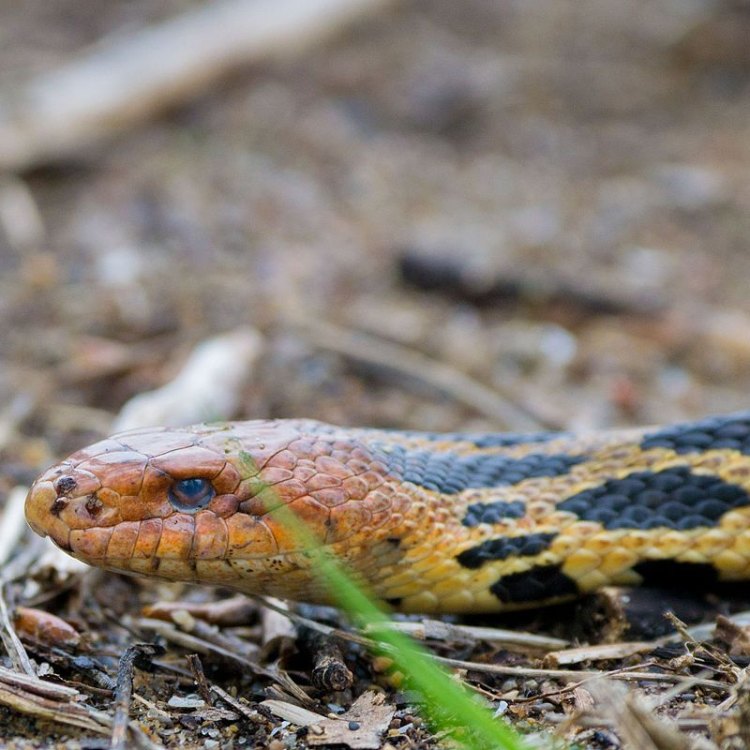
The Beautiful and Mysterious Fox Snake: A Fascinating Reptile of North America
Disclaimer: The content provided is for informational purposes only. We cannot guarantee the accuracy of the information on this page 100%. All information provided here may change without prior notice.






